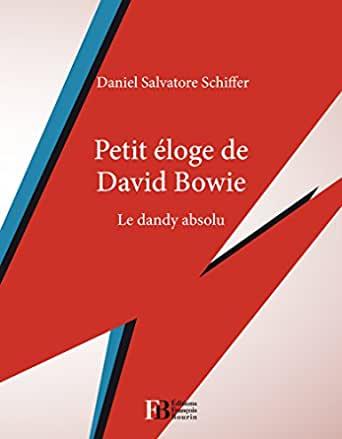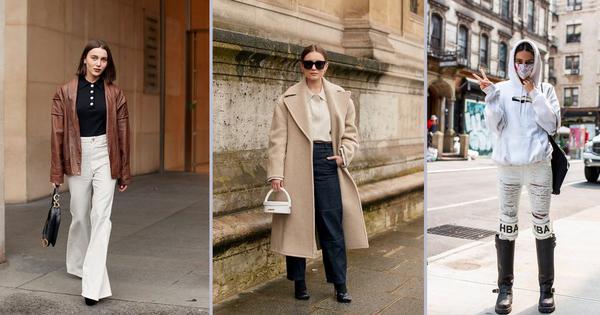
David Bowie, whom one would have thought eternal, so much this Dorian Gray of pop music, if not of pop culture as a whole, seemed not to age, to go beyond the ages, to transcend fashions and to reinvent styles, therefore died at the 69 years old, swept away by liver cancer after eighteen months of a courageous but vain fight, on Sunday January 10, 2016.
But if this immense rock star, creator of genius and myth during his lifetime, seemed immortal, defying even the cruel but imperious laws of human finitude, it is because he embodied marvelously, more than any other artist, the quintessence dandyism: a way of being more than fashionable. Bowie, absolute dandy!
Oscar Wilde already specified, about his romantic hero, in The Picture of Dorian Gray, a masterpiece of end-of-the-century literature, published in 1890:
“Fashion, which gives what is in reality a fantasy a provisionally universal value, and dandyism which, in its own way, tries to affirm the absolute modernity of beauty, fascinated him. His way of dressing and the particular styles he affected from time to time had a strong influence on young elegant people (…); they copied everything he did, and tried to reproduce the fortuitous charm of his graceful coquetry of toilet, even if for him they were only half-serious. (…). He wanted, however, in the depths of his heart, to be more than a simple arbiter elegantiarum who would be consulted on how to wear jewelry, tie a tie or handle a cane. He sought to invent a new system of life based on a reasoned philosophy and well-organized principles, and which found in the spiritualization of the senses its highest achievement. ".
How, indeed, not to see in this Dorian Gray, if only by the enormous influence which he exerted on entire generations, including in clothing fashion, the emblematic prefiguration of David Bowie, who, always pioneer, always innovative and even in constant rupture, upset conventions as much as he overturned codes, destabilized habits as he shook certainties, broke taboos as much as he disintegrated prejudices, made stereotypes outdated as he pulverized prohibited? Uninhibited, Bowie, this breaker of evidence to, through the illusion of the image, better construct the dream! But, above all, a necessary attitude and an obligatory passage, all this towards the tolerance of ideas, a principle that we would like to be universal, if not a certain form of humanism, which is too rare these days.
Novelty, always novelty, and therefore, as its indispensable correlate, renewal, of art as much as of oneself: such was the quest, the accessible star, of the star Bowie!

Prodigious intuition, therefore, of Wilde, who anticipates, almost a century in advance, what Roland Barthes, master of structuralism in the field of semiology, will support, in 1967, in Système de la mode, where he analyzes the way whose contemporaries try to confer on their external appearance, via a kind of “poetics of clothing”, a relation of meaning in relation to others.
Philippe Sollers, in a text entitled Metaphysics of Dandyism, points out just as rightly, adding, beyond its somewhat contradictory valence, an undeniable ounce of depth:
“Insolence, impertinence, casualness, it's all there. No slouched seriousness, no hysteria, nothing to do with the sinister parade of "people", this magazine advertising stunt. Dandyism, male or female, is not a function of fashion, but rather its negation, its enigmatic black hole. ".
Frédéric Beigbeder, no less shrewd, notes in an article entitled Urgence du dandysme:
“Dandyism is a philosophy, a requirement, a pride to be rehabilitated in this period of soft apocalypse. Dandyism is not a question of clothing but of freedom, of secret life, of inner wealth. ".
This is, all things considered, what John Galliano, who was for a long time Christian Dior's official stylist, declared in an interview entitled Le rêve dandy:
“Apart from frivolity and frock coats (…), a dandy is more than a fashion follower or a parade finale. ". .
A way of saying, for this unpredictable actor, that the dandy, far from following fashion, precedes it. Even more: he creates it! Designers as world-renowned as Thierry Mugler, Tom Ford, Vivienne Westwood, Kansai Yamamoto or Steve McQueen (it was with one of his eccentric frock coats, designed in the colors of the English flag, the Union Jack, that Bowie draped himself, in 1997, on the cover of the album Earthling), were not mistaken: they sometimes drew their inspiration from the clothing inventions of the various characters of Bowie, such as Dries Van Noten, who, in the parade of his collection presented in 2011, paid him explicit homage, or Jean-Paul Gaultier, who, in 2013, combed his models with wigs evoking the figure of Ziggy Stardust, which Bowie invented half a century earlier.
As for Galliano's conclusion, which appeals here to Baudelaire's enlightenment as much as to Byron's brilliance (who, he held forth like the good comedian he also knew to be, counted the dandies of his time on the fingers of a single glove), it is unequivocal: it makes the dandy a timeless being, even if he does indeed prove to be current, even more so than outside fashions. In fact, he wisely points out:
“Baudelaire said that the dandies made a profession of elegance, and that their only function was to maintain in themselves the idea of beauty. The dandy must be permanently sublime; he must live and die in front of a mirror. I like this idea and I think that the dandy and his way of life are timeless. The dandy does not belong to the past. Byron's or Baudelaire's prose can be as meaningful as Boy George's or David Bowie's falbala and transmit just as many vibrations today. ".
DANDYSM, A WAY OF BEING MORE THAN BEING FASHIONABLE
This means that the dandy thus perceived turns out to be far from being a “fashion victim”. On the contrary: he is much more fashionable, albeit with distance and sometimes irony, always flanked by his inseparable critical spirit, the real organizer if not - religious skepticism obliges - the high priest! This is also what Coco Chanel, one of the most outstanding dandy women of the twentieth century, a friend of the greatest artists and writers of her time, was going to claim already, several decades earlier: "Fashion passes , the style remains. Chanel is first and foremost a style. Fashion fades, only style remains. she liked to say of herself. The dandy: a star who, not necessarily being fashionable, can never necessarily go out of fashion!
Thus clothing, for any self-respecting dandy, and therefore for Bowie himself, is much more than an adornment. It is also an artifice designed to hide from him the mortal reality of the human condition. As suggestive as it is edifying, from this point of view, what Cioran, supporter of Schopenhauerian nihilism, says, in the chapter entitled clothing philosophy, in his Precis de décomposition:
“Clothing comes between us and nothingness. Look at your body in a mirror: you will understand that you are mortal; (…). It is because we are dressed that we flatter ourselves of immortality: how can one die when one wears a tie? The corpse dressed up misunderstands itself, and, imagining eternity, appropriates its illusion. The flesh covers the skeleton, the clothing covers the flesh: subterfuges of nature and of man. Instinctive and conventional deceptions: a gentleman cannot be steeped in mud or dust… Dignity, honour, decency, - so many escapes from the irremediable. ".
Another possible ingredient of sartorial aesthetics: more than just a simple, albeit handsome, outfit, it was an effective protection system intended to preserve it from the world, if not to isolate it from it, that Baudelaire made of his dashing clothes. In fact, he wonders, from the depths of his solitude, in La Fanfarlo, one of his best short stories:
“Who is the man who would not, even at the cost of half his life, see his dream, his real dream pose without a veil before him, and the adored ghost of his imagination make fall one by one all the clothes intended for protect against the eyes of the vulgar? ".
Thus, if it is true that fashion passes, and even passes away, the style, meanwhile, remains, forged at the limits of the timeless even more than the current: reason why the dandy Bowie is, independently even of his talent, transgenerational. More: a modern-day icon; the synthesis, from London, where he was born on January 8, 1947, to New York, where he died, of all the tendencies of "pop culture", from Andy Warhol to Damien Hirst, passing by his friend Jean-Michel Basquiat.
DANIEL SALVATORE SCHIFFER*
*Philosopher, author of Little Praise of David Bowie - The Absolute Dandy (Éditions François Bourin).
" src="http://placehold.it/280x140&text=" alt="media placeholder" id="5746d0faa5c95924178b4567" data-insert="options[legend]="/>







